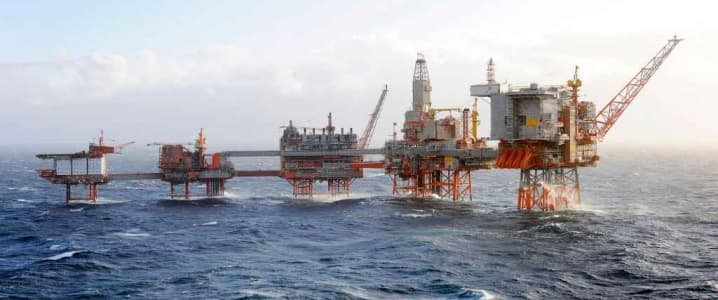Europe’s largest oil and gas producer, Norway, suffered its fair share of problems when oil prices tanked three years ago. Yet, helped by the cushion of its massive sovereign wealth fund, the Norwegian economy is back on track, and this year’s unemployment fell to 2.4 percent, according to the country’s central bank—the lowest since 2012.
The central bank now believes that job creation will continue, and that unemployment will continue to shrink, with the rate of the shrinking gradually slowing down, as befits the cyclical nature of the labor market. That’s a pretty good development, especially in light of the fact that between 2013 and 2016, employment in the oil industry in the country shrank by about a fifth, from more than 232,000 people to 183,800, as the industry struggled with the global oil price crisis.
The petroleum sector—which accounts for 12 percent of Norway’s GDP and for 36 percent of the nation’s total exports—generated 40 percent lower revenues for the government in 2016 compared to 2015. These revenues should have improved this year thanks to higher oil prices, even though oil and gas investments in the Norwegian Continental Shelf are expected to drop for a fourth consecutive year in 2018. One might think that this means Norway is moving away from oil after the crisis, but that would only be partially true.
Norway’s oil fields are maturing, that’s true. New exploration has had mixed results, but after a decline between 2001 and 2013, oil production is now on the rise and has been for the last three years despite the oil price collapse.
Two huge fields discovered in 2010 and 2011, Johan Sverdrup in the North Sea, and Johan Castberg in the Barents Sea, are expected to start operations in 2019 and 2022 respectively, and will lift Norway’s oil production in the early 2020s compared to expected declines in 2018 and 2019. But after 2025, production and activity are expected to significantly drop off unless there are new discoveries, according to oil major Statoil.
So, it appears that Norway is not moving away from oil, despite the severe blow to employment in the industry and despite the fact that the nation’s US$1-trillion Government Pension Fund Global recommended last month the removal of oil and gas stocks—US$35 billion worth of shares—from the fund’s equity benchmark index to make Norway’s wealth and economy less vulnerable to a permanent drop in oil and gas prices.
Related: Goldman: Oil Markets To Balance Sooner Than Expected
Evidence shows that Norway is among the more sensible oil producers. It is investing heavily in green energy, but it has no plans to stop producing oil and gas, not until there is falling demand for hydrocarbons and their derivatives. According to Wood Mac, this demand will continue to rise in Europe—Norway’s biggest oil and gas buyer—until about 2035. After that, it will start declining, but demand for petrochemicals will continue to go up.
While there is a market for a product, the product will be supplied, and Norway is possibly the best example of that principle. At the same time, the wound from the 2014 crisis is still fresh: in early 2016, unemployment almost hit 5 percent, a rate not seen for over 16 years. And although the oil fund helped to cushion the blow, the government had to do everything it can to avoid a repeat of the crisis, including a major monetary stimulus program. It appears to have worked: earlier this month the central bank’s governor, Oystein Olsen, said the bank may lift the basic interest rate from the current record-low 0.5 percent at the end of 2018.
By Irina Slav for Oilprice.com
More Top Reads From Oilprice.com:
- Oil Prices Stable On Flat Oil Rig Count
- Should The State Take Over Pacific Gas & Electric?
- Saudi Arabia Eyes 80% Jump In Oil Revenues By 2023

















